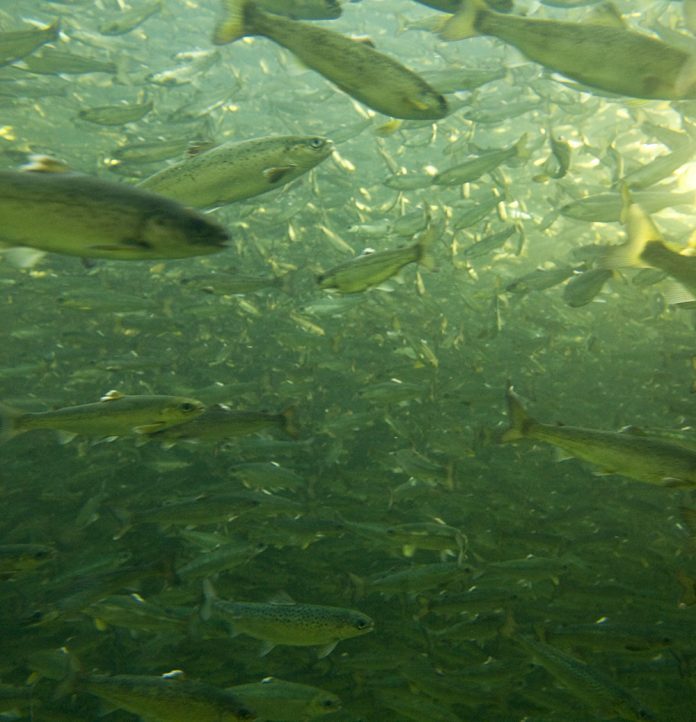The Canadian Government this week downplayed the risk of contracting a certain virus for wild Pacific salmon swimming past nets full of Atlantic salmon, in the first of a series of “consensus reports” to be rolled out over the next weeks on virus risks and sea lice.
The releases, for some, are a battle of researchers intent on drowning each other out on the exact risks posed by farmed-salmon to wild salmon. The latest broadside from the Ministry of Fisheries and Oceans said infectious hematopoietic necrosis virus, or IHNV, poses “minimal risks to the wild Fraser River sockeye salmon populations due to the transfer of IHNV from Atlantic salmon farms (of British Columbia’s) Discovery Islands.”
Anything above “minimal”, and the government had said it would intervene to stop salmon-farming in the Discovery Islands altogether.
“Current fish health management practices such as vaccination and eradication of infected fish help to minimize the risk,” the researchers said, adding that the advice in the report was developed by consensus.
In all, the IHNV “consensus” report on a virus which also exists naturally in wild salmon is understood to have been reviewed by 39 experts.
Years of study
With the government looking to appear to address all health risks shared by wild and farmed salmon, the report is one of many now being rolled out after years of pathogen risk assessment. Earlier this month, however, B.C. Salmon Farmers reacted to another report — claiming wild salmon were at greater risk of PRv virus for swimming near Atlantics in the Campbell River — that appeared to come from Ottawa, but which might, in reality, have been “an attempt to disguise advocacy as science”.
Behind it all is Ottawa’s promise to publish “all reports” under the Aquaculture Science Environmental Risk Assessment Initiative, although an existing report — the Cohen Commission Report — had spelled out the risks to wild fish of farmed-fish pathogens. In it Justice Bruce Cohen also suggested halting the placement of net-pen salmon farms in the Discovery Islands until September 2020.
Due out soon is a sea-lice review and a study on the risk of pesticide use as well as nine other virus reports.


